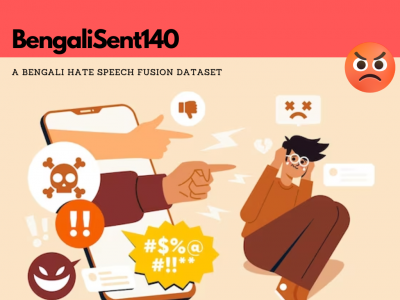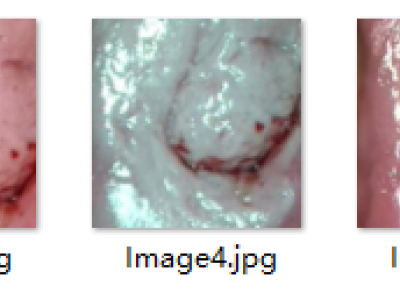*.csv
In today's world of online communication and digital media, hate speech has become an alarming problem worldwide. With the advancement of the internet, while people enjoy numerous benefits, there's also a dark side where individuals are subjected to horrendous bullying through hate speech. Tragically, some instances even lead to extreme actions like suicide or self-destructive behavior.
- Categories:
 576 Views
576 ViewsThe electroretinogram (ERG) is a clinical test that records the retina's electrical response to light. The ERG is a promising way to study different neurodevelopmental and neurodegenerative disorders, including Autism Spectrum Disorder (ASD) - a neurodevelopmental condition that impacts language, communication, and social interactions. However, privacy issues and a lack of data complicate Artificial Intelligence applications in this domain. Synthetic ERG signals generated from real ERG recordings should carry similar information and could be used as an extension for natural data.
- Categories:
 320 Views
320 Views
The rise of e-commerce in Latin America has been driven by the digital presence of the younger generations and the adaptation of retail businesses to online sales channels. The COVID-19 pandemic has further accelerated this shift, forcing businesses to enhance their online commerce strategies. Peru has witnessed a notable 131\% increase in online shoppers from 2019 to 2021. However, the absence of a unique global code for product identification negatively affects the Zero Moment of Truth (ZMOT) in customer decision-making.
- Categories:
 21 Views
21 ViewsThe e-commerce market heavily relies on e-coupons, and their digital nature presents challenges in establishing a secure e-coupon infrastructure, which incurs maintenance costs. To address this, we explore using public blockchains for the e-coupon system, providing a highly reliable decentralized infrastructure with no maintenance costs. Storing coupon information on a blockchain ensures tamper resistance and protection against double redemption. However, using public blockchains shifts gas cost responsibility to users, potentially impacting user experience if not managed carefully.
- Categories:
 183 Views
183 ViewsThe gearbox is a critical component of electromechanical systems. The occurrence of multiple faults can significantly impact system accuracy and service life. The vibration signal of the gearbox is an effective indicator of its operational status and fault information. However, gearboxes in real industrial settings often operate under variable working conditions, such as varying speeds and loads. It is a significant and challenging research area to complete the gearbox fault diagnosis procedure under varying operating conditions using vibration signals.
- Categories:
 1674 Views
1674 Views
Containerization has emerged as a revolutionary technology in the software development and deployment industry. Containers offer a portable and lightweight solution that allows for packaging applications and their dependencies systematically and efficiently. In addition, containers offer faster deployment and near-native performance with isolation and security drawbacks compared to Virtual Machines. To address the security issues, scanning tools that scan containers for preexisting vulnerabilities have been developed, but they suffer from false positives.
- Categories:
 98 Views
98 ViewsDataSet used in learning process of the traditional technique's operation, considering different devices and scenarios, perform the commutation through Pure ALOHA protocol, and make the device to operate with the best possible configuration.The control of energy consumption is essential for the operation of battery-operated systems, such as those used in IoT networks and sensors. The algorithms commonly employed for this purpose involve optimization functions with considerable complexity and rigorous control of the test environment.
- Categories:
 371 Views
371 Views
This dataset accompanies a research paper on leveraging Machine Learning (ML) techniques for regression to predict the optimum DC bias in direct current in optical orthogonal frequency division multiplexing (DCO-OFDM). The dataset comprises a set of features to facilitate the prediction of the required DC bias to mitigate the impact of clipping distortion at the transmitter. MATLAB software was utilized for modelling the DCO-OFDM transmission and generating the research dataset.
- Categories:
 199 Views
199 Views
The Comprehensive Hindi Hostile Post Detection Dataset (CM-HTHPD) is collection of Twitter posts written in the Hindi language, focusing on various forms of hostile content. The dataset was gathered using the Twitter Developer API and subsequently annotated manually with sentiment labels using the Label Studio platform. The dataset is primarily aimed at facilitating research and analysis in the domain of hostile content detection and sentiment analysis in Hindi-language social media discourse. The size of the dataset is approx 8300.
- Categories:
 112 Views
112 Views
The paucity of data has long hindered the accurate modeling of CO2 concentrations within peatland regions, despite their significance as carbon reservoirs. Peatlands naturally sequester substantial carbon underground, yet disturbances, whether due to climate change or land use shifts, can trigger the release of significant amounts of carbon and other greenhouse gases, thereby disrupting the atmosphere and impacting human lives. The lack of comprehensive data has rendered it challenging to thoroughly assess the peatland regions' contribution to the net ecosystem carbon budget (NECB).
- Categories:
 396 Views
396 Views



